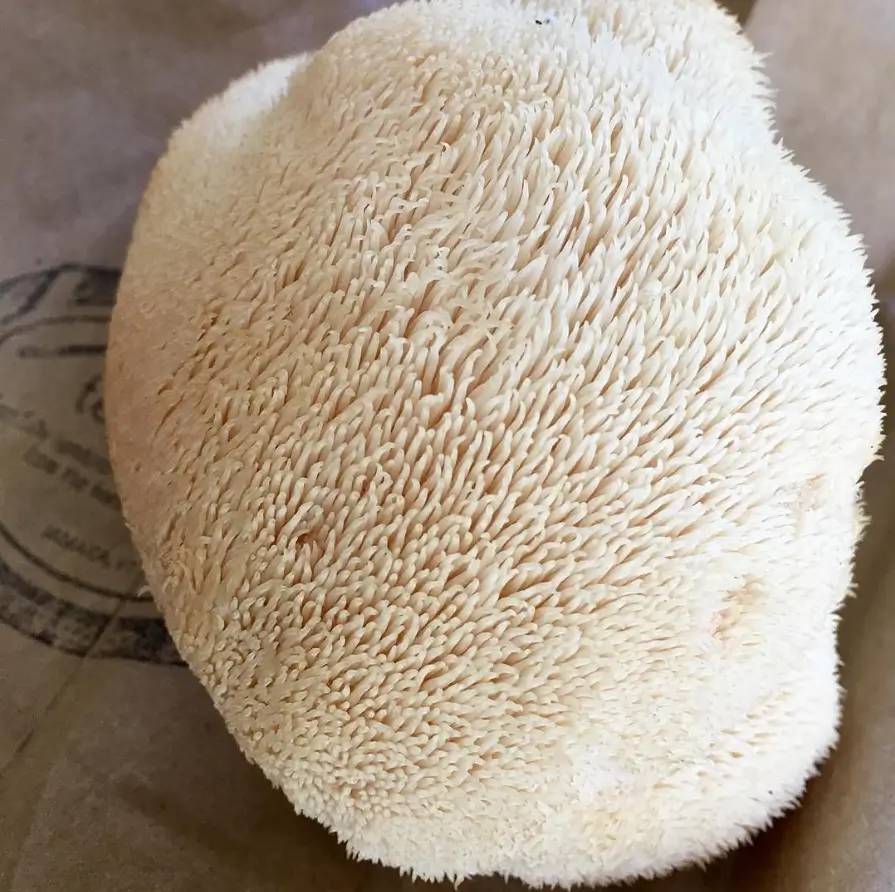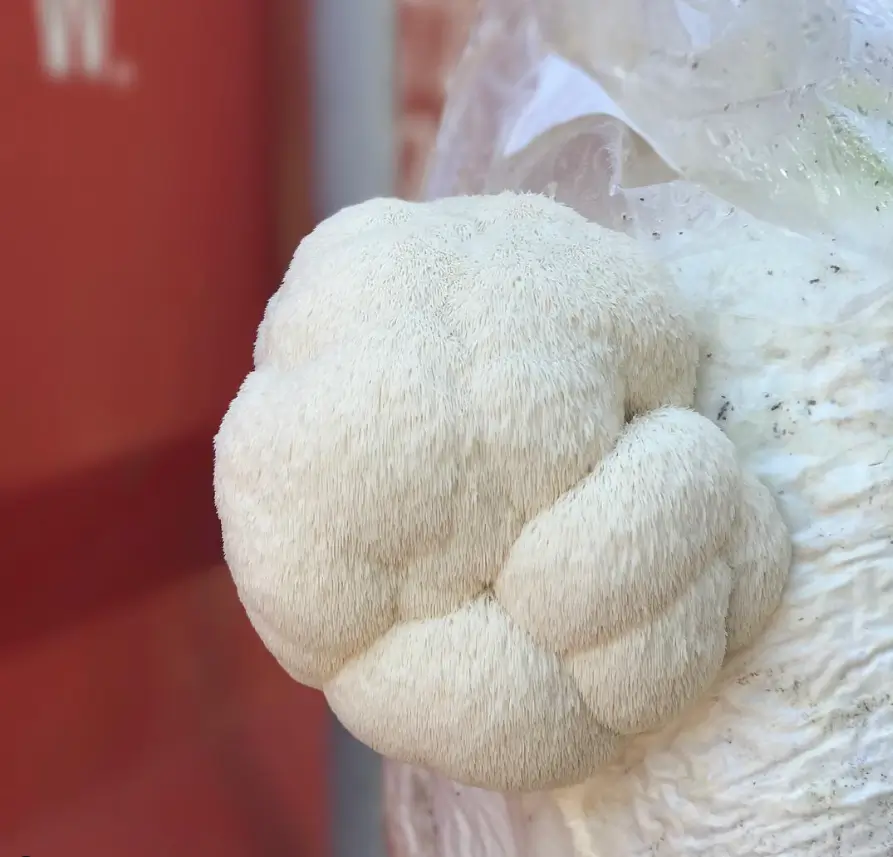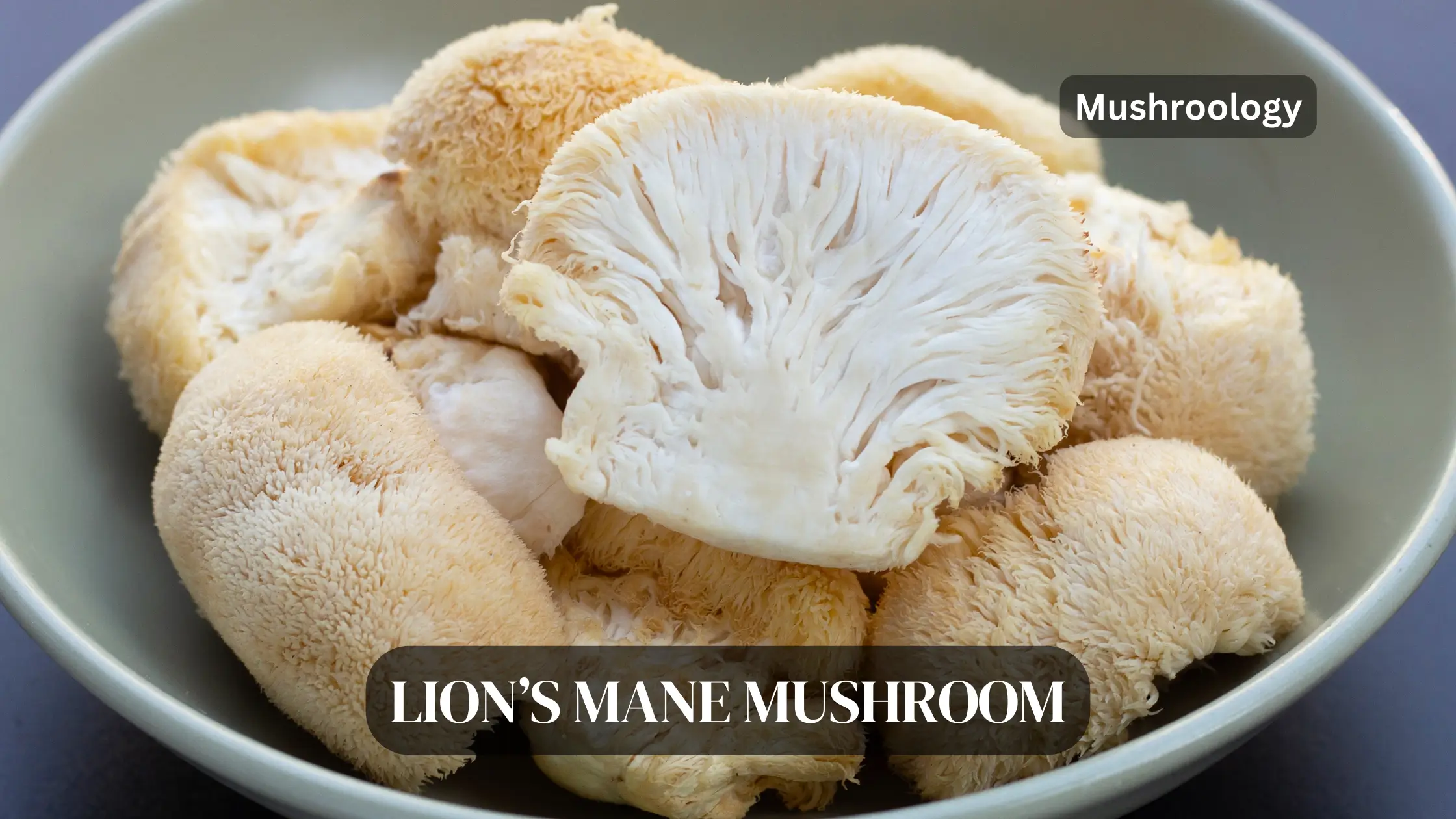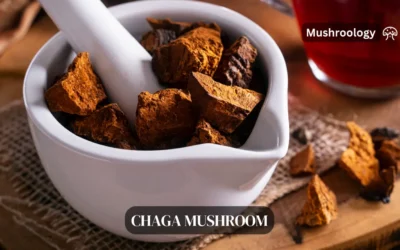Did you know that lion’s mane mushrooms, with their unique appearance and incredible health benefits, are gaining popularity as a home cultivation project?

Key Takeaways:
- Start with Quality Spawn
- Choose the Right Substrate
- Maintain Proper Environmental Conditions
- Sterilize or Pasteurize Your Substrate
- Monitor Moisture Levels
- Inoculate Under Clean Conditions
- Be Patient During Incubation
- Initiate Fruiting at the Right Time
- Harvest at Peak Maturity
- Enjoy the Fruits of Your Labor
- Learn from Each Cycle
What is Lion’s Mane Mushroom?
Lion’s mane mushrooms, scientifically known as Hericium erinaceus, are a fascinating and visually striking fungus. Other common names are bearded tooth fungus, bearded hedgehog, old man’s beard yamabushitake.
These mushrooms resemble the flowing mane of a lion, with their cascading, white, pom-pom-like appearance. As they mature, the spines on the mushroom become longer and more prominent, adding to their unique and captivating characteristics.
Lion’s mane mushrooms can grow to be fairly large, reaching sizes of up to 10-12 inches (30 centimetres) in diameter. They are typically found growing on rotting hardwood trees and logs in the northern hemisphere, particularly in regions of Asia, Europe, and North America.
These mushrooms are visually impressive and boast a range of potential health benefits. Lion’s mane contains bioactive compounds that have been associated with various medicinal properties. Research suggests that lion’s mane may offer protection against dementia and provide potential benefits for managing symptoms of stomach ulcers, heart disease, and diabetes.
Characteristics of Lion’s Mane Mushroom:
- Kingdom: Fungi
- Division: Basidiomycota
- Class: Agaricomycetes
- Order: Russulales
- Family: Hericiaceae
- Genus: Hericium
- Species: H. erinaceus
Is Lion’s Mane Mushroom Easy to Grow?
While growing lion’s mane mushrooms can be a rewarding experience, it is important to note that they may pose some challenges, especially for beginners. Unlike other mushrooms, the mycelium of lion’s mane takes longer to develop, increasing the risk of contamination during the colonization process.
Alternatively, you can use a lion’s mane mushroom growing kit if you prefer a more straightforward option. These kits typically provide everything you need to start your cultivation journey, including pre-inoculated substrates and detailed instructions.
Growing Lion’s Mane Mushrooms Indoors

Here’s a step-by-step guide to cultivating Lion’s Mane mushrooms at home using a substrate-based method:
1. Gather Your Supplies
Lion’s Mane Spawn: Purchase high-quality Lion’s Mane mycelium spawn from a reputable supplier.
Substrate: Hardwood sawdust or pellets mixed with a supplement such as wheat bran is ideal. Lion’s Mane prefers hardwood as its growing medium.
Bags or Containers: Use autoclavable bags with filter patches or suitable containers for your substrate.
Sterilization Equipment: A pressure cooker or large pot for sterilizing the substrate.
Miscellaneous Tools: Measuring cups, a mixing bowl or bucket, and a thermometer.
2. Prepare the Substrate for Lion’s Mane mushrooms
Mixing: Combine hardwood sawdust with wheat bran at a ratio of approximately 5:1. For every 5 cups of sawdust, add 1 cup of bran. Adjust the ratio based on the specific requirements of your spawn.
Moisture Content: Add water to achieve a moisture content of about 60-65%. The substrate should be moist but not soggy.
Sterilization: Sterilize the mixture to kill any unwanted bacteria or fungi. Pack the substrate into your bags or containers, then steam or pressure cook at 15 PSI for 90-120 minutes.
3. Cool the Substrate
Allow the sterilized substrate to cool to room temperature. Avoid opening the sterilizer or bags until they are cool to prevent contamination.
4. Inoculate the Substrate
Clean Environment: Clean your workspace and wash your hands to minimize contamination risk.
Inoculation: Open the bag or container and evenly mix in the Lion’s Mane spawn with the cooled substrate. Seal the bag or container after inoculation.
5. Incubation
Place the inoculated substrate in a dark, clean space with a stable temperature around 21°C (70°F).
Monitor the bags for signs of mycelial growth, which should appear as white, web-like structures spreading throughout the substrate.
This phase can take 2-4 weeks, depending on conditions. The substrate is fully colonized when it’s covered in mycelium.
6. Initiate Fruiting
Once fully colonized, introduce the bags or containers to conditions conducive to fruiting. This includes higher humidity (around 90-95%), lower temperature (15-18°C or 60-65°F), and indirect light.
Introduce Fresh Air: Lion’s Mane mushrooms require fresh air to develop properly. Open the growing area a few times a day to exchange air or use a fan for indirect ventilation.
Moisture: Maintain high humidity by misting the air around the mushrooms, not directly onto them, to avoid damaging the delicate mycelium.
7. Harvesting your Lion’s Mane mushrooms
Lion’s Mane mushrooms are ready to harvest when the spines have fully elongated and the mushrooms have ceased growing in size. This usually occurs within a week or two of fruiting initiation.
Use a sharp knife to cut the mushrooms at the base. Be careful not to damage the mycelium in the substrate to allow for additional flushes.
8. Subsequent Flushes
After harvesting, you can often get additional flushes of mushrooms. Simply continue to maintain the fruiting conditions, and new mushrooms should begin to form within a couple of weeks.
Remember, cleanliness and attention to environmental conditions are key to successful indoor mushroom cultivation. Enjoy the process and the unique experience of growing your own Lion’s Mane mushrooms!
Growing Lion’s Mane on Logs
If you prefer an outdoor approach to cultivating lion’s mane mushrooms, growing them on logs is an excellent option. This method allows you to harness the natural environment and create a sustainable source of these delicious and nutritious fungi.
1. Select Your Logs
Type of Wood
Choose hardwood logs such as oak, beech, maple, or birch, as Lion’s Mane prefers these. Avoid using softwoods.
Size
Ideal logs are 3 to 8 inches in diameter and about 3 to 4 feet in length.
Condition
Use fresh logs, cut during the dormant season (late winter to early spring) for higher sugar content. Ensure they are free from disease and rot.
2. Acquire Mushroom Spawn
Purchase Lion’s Mane spawn, preferably in the form of plug spawn for ease of use in logs. The amount of spawn needed depends on the number and size of logs. A standard rule is about 50 plugs for a 4-foot log.
3. Drill Holes in the Logs
Drill holes about 1 inch deep along the length of the log. Space holes about 6 inches apart in rows, with each row offset from the next to create a diamond pattern. Use a drill bit that matches the size of your plug spawn, typically 5/16 or 3/8 inch.
4. Inoculate the Logs
Tap the plug spawn into the holes using a hammer. Ensure they are flush with the log surface or slightly recessed.
Cover the holes with wax (cheese wax, beeswax, or paraffin wax) to protect the spawn from drying out and to prevent contamination. Melt the wax and apply it with a small brush or a dauber.
5. Store the Logs for Colonization
Stack the inoculated logs in a shaded, moist area. You can use a “lean-to” stack, a “log cabin” stack, or simply lean them against a support.
Keep the logs moist but not saturated. Covering them with a shade cloth can help retain moisture. Avoid letting them dry out, especially during hot or windy conditions.
6. Wait for Colonization
It takes about 6 to 12 months for the mycelium to fully colonize the logs. You can check for colonization by looking for white mycelial growth at the ends of the logs or under the bark.
7. Fruiting
Once fully colonized, the logs may fruit naturally, typically in the fall. For some logs, you might need to shock them into fruiting by soaking them in cold water for 24 hours.
Ideal fruiting conditions for lion’s mane include high humidity, temperatures between 15-24°C (59-75°F), and indirect light.
8. Harvesting
Harvest Lion’s Mane when the spines are long and the mushroom is still white before it starts to yellow. Cut them off close to the log using a knife.
Logs can produce multiple flushes of mushrooms, usually in the spring and fall. After harvesting, the logs can rest until the next fruiting cycle.
9. Maintenance Between Flushes
Keep the logs in a shaded, moist area. Sprinkle water during dry periods to maintain moisture. Avoid letting the logs dry out completely.
Growing Lion’s Mane mushrooms on logs is a sustainable method that can provide you with fresh mushrooms for several years from the same log, with most logs producing for 3 to 6 years. Enjoy the process and the delicious rewards of your efforts!
Harvesting Lion’s Mane Mushrooms
Harvesting Lion’s Mane mushrooms at the right time and in the correct manner is crucial for maximizing both the yield and quality of your harvest.
1. Monitor the Growth
Lion’s Mane mushrooms are ready to harvest when the spines or teeth are long and have stopped elongating, and the mushroom itself has a somewhat shaggy appearance. This typically occurs several days to a week after the mushrooms begin to form noticeable fruiting bodies.
2. Check for Maturity
The mushrooms are mature and ready for harvesting when the tips of the spines are still white, and before they start to yellow or brown, which indicates aging.
Mature Lion’s Mane will have a firm texture and may reach a considerable size, sometimes as large as a softball or larger.
3. Prepare for Harvest
Ensure that the knife or scissors you plan to use for harvesting are clean to prevent introducing any bacteria or fungi that could harm the mycelium.
Clean your hands thoroughly or wear gloves to maintain the cleanliness of the mushroom and prevent contamination.
4. Harvesting Technique
Use a sharp knife or scissors to cut the mushroom at its base, close to the substrate. Be gentle to avoid damaging the mycelium or the remaining fruiting bodies.
Alternatively, you can gently twist the mushroom off at its base. This method requires care to ensure that you don’t disturb the substrate or neighbouring mushrooms.
5. Post-Harvest Handling
Handle the harvested mushrooms gently to avoid bruising. Lion’s Mane mushrooms are delicate and can damage easily.
If you plan to use the mushrooms immediately, they can be cooked fresh. Lion’s Mane mushrooms have a flavour and texture reminiscent of seafood, making them a versatile culinary ingredient.
6. Storing the Mushrooms
If not using immediately, store Lion’s Mane mushrooms in the refrigerator. Place them in a paper bag to allow for air circulation and prevent moisture buildup, which can lead to spoilage.
For longer storage, Lion’s Mane mushrooms can be dried. Slice the mushrooms and place them in a dehydrator or an oven at a low temperature until completely dry. Store the dried mushrooms in an airtight container in a cool, dark place.
7. Encouraging Further Growth
After harvesting, continue to care for the substrate by maintaining humidity and temperature conditions suitable for mushroom growth. This can encourage additional flushes of mushrooms.
Check the substrate regularly for signs of new fruiting bodies developing. Additional harvests can often be obtained from the same substrate over several weeks or months.
8. Enjoy Your Harvest
Experiment with different recipes to enjoy your Lion’s Mane mushrooms. Whether sautéed, used in soups, or as a substitute for seafood, Lion’s Mane mushrooms offer a unique flavor and texture profile.
Where to Buy Lion’s Mane Mushrooms
Looking to get your hands on some lion’s mane mushrooms? While finding fresh lion’s mane mushrooms at your local supermarket might be a challenge, there are plenty of options available for purchasing lion’s mane mushrooms and related products. Whether you’re looking for fresh mushrooms, dried powder, supplements, or even growing kits, you have a variety of choices.
If you prefer the convenience of online shopping, numerous online retailers offer a wide range of lion’s mane mushroom products. These retailers carry everything from fresh lion’s mane mushrooms to lion’s mane mushroom powder, supplements, and even complete growing kits. When buying online, be sure to choose reputable sources to ensure the quality and authenticity of the products.
Alternatively, you may find lion’s mane mushrooms or lion’s mane-derived products at specialty food stores or health food stores in your area. These stores often cater to health-conscious individuals and may carry a selection of lion’s mane mushrooms or lion’s mane mushroom products on their shelves.
E-commerce Retailers
Check out some popular e-commerce retailers that offer lion’s mane mushrooms and related products:
- Amazon
- Wholesome Healthy
- Quality Mushrooms
Specialty Food Stores
If you prefer to browse local stores, you might find lion’s mane mushrooms at specialty food stores near you:
- Healthy Harvest Market
- Green Leaf Organic Market
Cautionary Note
When purchasing lion’s mane mushrooms or any mushroom-based products, it’s essential to choose verified and trusted sources. This ensures that you are getting genuine products that meet quality and safety standards. Always check for customer reviews, certifications, and product information before making a purchase.
Now that you know where to buy lion’s mane mushrooms and related products, you can embark on your culinary and health journey with this magnificent fungus.
Lion’s Mane Mushroom Recipes
Lion’s mane mushrooms are not only nutritious but also versatile in the kitchen. They have a mild, slightly sweet flavor and a meat-like texture when cooked. This makes them a great addition to vegetarian and vegan dishes as a meat substitute. Here are some delicious lion’s mane mushroom recipes to try:
Sautéed Lion’s Mane Mushrooms
Sautéed lion’s mane mushrooms are a simple and flavorful way to enjoy this unique fungus. To make this dish, heat a pan over medium heat and add olive oil. Add thinly sliced lion’s mane mushrooms and sauté until they are nicely browned. Season with salt, pepper, and your choice of herbs or spices. Serve as a side dish or use them to top salads, grains, or pasta. The earthy flavor and tender texture of sautéed lion’s mane mushrooms will add depth to any meal.
Grilled Lion’s Mane Steaks
For a hearty and satisfying dish, try grilling lion’s mane mushrooms as a delicious vegetarian alternative to steak. Start by slicing the mushrooms into thick slices or steaks. Brush both sides with olive oil and season with salt, pepper, and your favorite spices.
Preheat the grill to medium-high heat and place the mushrooms directly on the grates. Cook for about 3-4 minutes on each side until they are charred and tender. Serve these grilled lion’s mane steaks with roasted vegetables or as a filling for sandwiches or burgers.
Lion’s Mane Stir-Fry
A stir-fry is a quick and versatile way to showcase the unique texture of lion’s mane mushrooms. Heat a wok or large skillet over high heat and add sesame oil. Add sliced lion’s mane mushrooms, along with your favorite vegetables such as bell peppers, broccoli, and carrots.
Stir-fry for a few minutes until the mushrooms are cooked through and the vegetables are crisp-tender. Season with soy sauce, ginger, garlic, and a pinch of red pepper flakes for a flavorful and satisfying meal.
Lion’s Mane Mushroom Soup
A comforting bowl of mushroom soup is perfect for colder weather, and lion’s mane mushrooms can add a delightful twist to this classic dish.
Start by sautéing onions and garlic in a large pot until they are translucent. Add chopped lion’s mane mushrooms and cook until they release their moisture. Pour in vegetable or mushroom broth and bring to a simmer. Let the soup cook for about 20 minutes to allow the flavors to meld together. Blend the soup until smooth using an immersion blender or a regular blender.
Season with salt, pepper, and herbs of your choice. Serve hot with a sprinkle of fresh herbs on top.
Lion’s Mane Mushroom Pasta
Lion’s mane mushrooms can be a tasty addition to pasta dishes, bringing a unique flavor and texture to the dish. Start by cooking your favorite pasta according to the package instructions. In a separate pan, sauté lion’s mane mushrooms with garlic and olive oil until they are golden brown. Toss the cooked pasta with the mushrooms and add fresh herbs such as parsley or basil. Drizzle with extra-virgin olive oil and sprinkle with grated Parmesan cheese. This lion’s mane mushroom pasta is a simple yet satisfying meal.
These are just a few examples of how you can incorporate lion’s mane mushrooms into your cooking. Don’t be afraid to get creative and experiment with different flavors and cooking techniques. Whether you’re sautéing, grilling, or using them in soups and stir-fries, lion’s mane mushrooms bring a unique and delicious element to your dishes.
Health Benefits of Lion’s Mane
Lion’s mane mushrooms offer a host of health benefits due to their unique composition. Packed with bioactive compounds, such as hericenones and erinacines, these mushrooms possess neuroprotective and antioxidant properties that can promote overall well-being.
| Medicinal Properties | Benefits |
|---|---|
| Neuroregeneration | Promotes the growth and repair of nerve cells |
| Neuroprotective effects | May protect against cognitive decline and improve cognitive function |
| Anti-inflammatory properties | Reduces inflammation and alleviates symptoms of conditions such as arthritis and inflammatory bowel disease |
| Immune system support | Stimulates the immune system for better overall health |
| Digestive health | Protects the stomach lining and reduces the risk of gastric ulcers |
Due to its medicinal properties, lion’s mane mushrooms are available in various forms, such as capsules, powders, and tinctures. These lion’s mane mushroom supplements offer a convenient way to incorporate the health benefits of lion’s mane into your daily routine.
Incorporating lion’s mane mushrooms into your diet opens up a world of culinary possibilities. From stir-fries to soups and everything in between, these delectable mushrooms add a mild, slightly sweet flavor and a meat-like texture to your dishes. Experimenting with various recipes allows you to explore their versatility and enjoy the valuable nutrients they provide.
Whether you’re a beginner or an experienced mushroom grower, the journey of cultivating lion’s mane mushrooms is both rewarding and worthwhile. Not only do you get the pleasure of witnessing their growth and transformation, but you also gain access to their potential health benefits. So why not embark on this exciting adventure and start cultivating your own lion’s mane mushrooms today?
FAQ
What is a Lion’s Mane Mushroom?
A lion’s mane mushroom, scientifically known as Hericium erinaceus, is a white, pom-pom-like fungus that resembles the mane of a lion. It is found on rotting hardwood trees and logs in the northern hemisphere and is native to Asia, Europe, and North America.
Is Lion’s Mane Mushroom Easy to Grow?
Growing lion’s mane mushrooms can present challenges for beginners. The mycelium of lion’s mane takes longer to develop than other mushrooms, increasing the risk of contamination. Determining when the lion’s mane is fully colonized and ready to fruit can be difficult for first-time growers.
How do I Grow Lion’s Mane Mushrooms Indoors?
To grow lion’s mane mushrooms indoors, you will need to create a suitable growing environment. This involves preparing your supplies, cleaning and sterilizing your work area, preparing your mushroom substrate, inoculating it with lion’s mane spawn, and providing specific temperature, humidity, and light conditions for fruiting.
How do I Grow Lion’s Mane on Logs?
To grow lion’s mane mushrooms on logs, you need to select healthy hardwood logs, preferably from dormant trees, and inoculate them with lion’s mane spawn plugs. The logs need to be stored in a shady spot and kept moist for the mycelium to colonize. After a period of time, the logs will start producing lion’s mane mushrooms.
How do I Harvest Lion’s Mane Mushrooms?
Lion’s mane mushrooms should be harvested after they have developed tendrils on the bottom but before they start releasing spores. Tendrils that are 3-5 cm long indicate that the mushroom is ready to be harvested. To remove the mushrooms, gently twist and pull the entire cluster off at the base.
What are the Health Benefits of Lion’s Mane?
Lion’s mane mushrooms offer various health benefits, including potential protection against dementia, stomach ulcers, heart disease, and symptoms management of diabetes. They also have neuroprotective, antioxidant, anti-inflammatory, and immune-boosting properties, which support brain health, improve cognitive function, and promote overall well-being.
Where can I Buy Lion’s Mane Mushrooms?
You can buy lion’s mane mushrooms and related products from online retailers. They offer a wide range of options, including fresh mushrooms, dried powder, supplements, and growing kits. Additionally, some specialty food stores and health food stores may carry lion’s mane mushrooms or products derived from them.
What are Some Lion’s Mane Mushroom Recipes?
Lion’s mane mushrooms have a mild, slightly sweet flavor and a meat-like texture when cooked. They can be sautéed, grilled, roasted, or used in stir-fries, soups, stews, pasta dishes, mushroom-based sauces, sandwiches, and wraps. The versatility of lion’s mane mushrooms makes them a great addition to vegetarian and vegan dishes as a meat substitute.
What are Outdoor Mushroom Cultivation Techniques?
Outdoor mushroom cultivation techniques include log cultivation, wood chip cultivation, and straw bed cultivation. Each method requires specific conditions and procedures to ensure successful growth. Factors such as selecting the right substrate, maintaining proper humidity and temperature levels, and protecting against pests and contaminants are crucial for outdoor mushroom cultivation.
What are the Medicinal Properties of Lion’s Mane?
Lion’s mane mushrooms have medicinal properties that include neuroregeneration, neuroprotection, anti-inflammatory effects, and immune system support. Research suggests that lion’s mane may promote nerve cell growth, improve cognitive function, reduce inflammation, and support digestive health. Lion’s mane mushroom supplements are available in various forms, such as capsules, powders, and tinctures.
Can I Grow Lion’s Mane Mushrooms Indoors Successfully as a Beginner?
While lion’s mane mushrooms can be challenging to grow indoors for beginners, gaining some hands-on experience with mushroom cultivation is recommended before attempting to grow lion’s mane. Starting with oyster mushrooms is a great way to practice. Alternatively, you can use a lion’s mane mushroom growing kit if you prefer a more straightforward option.





